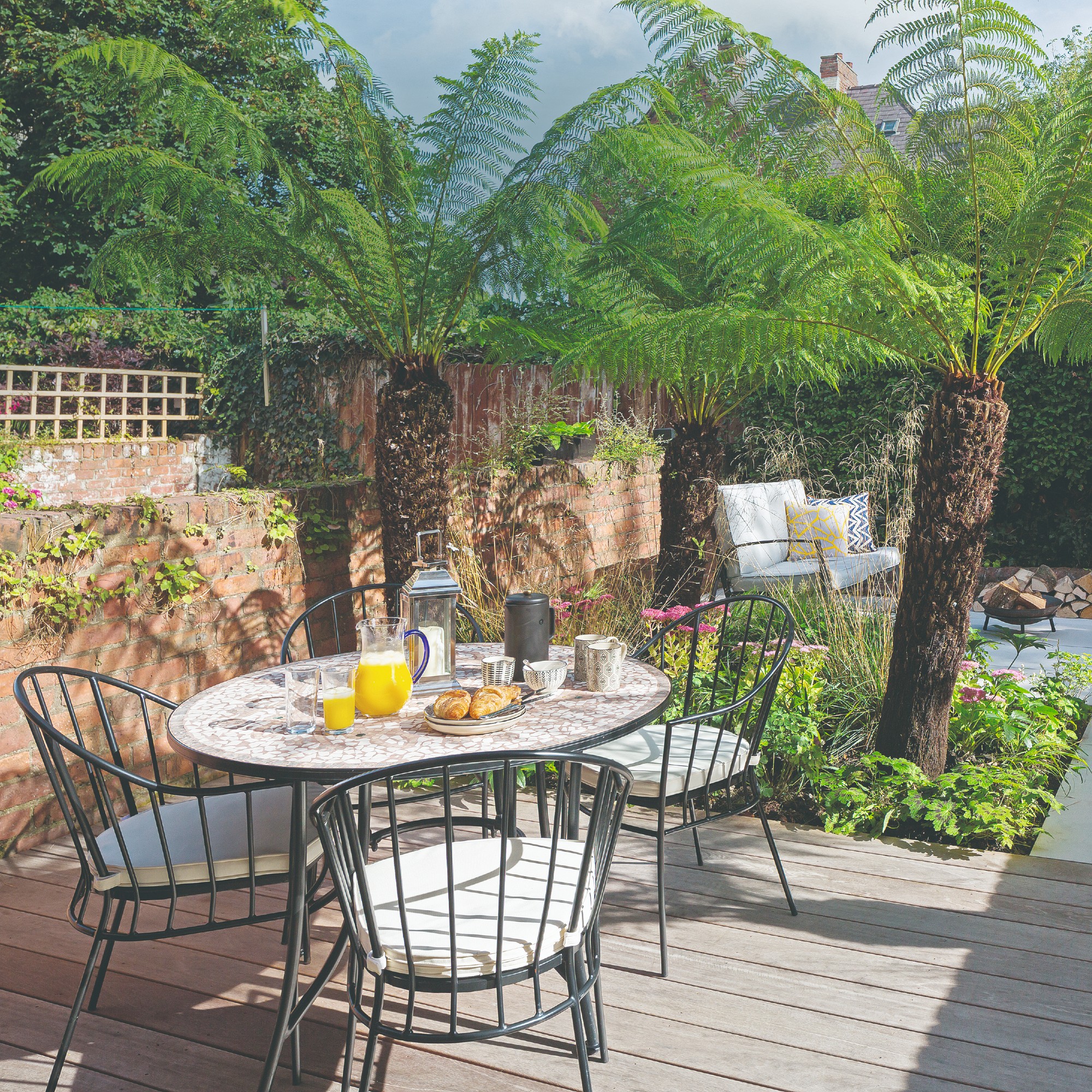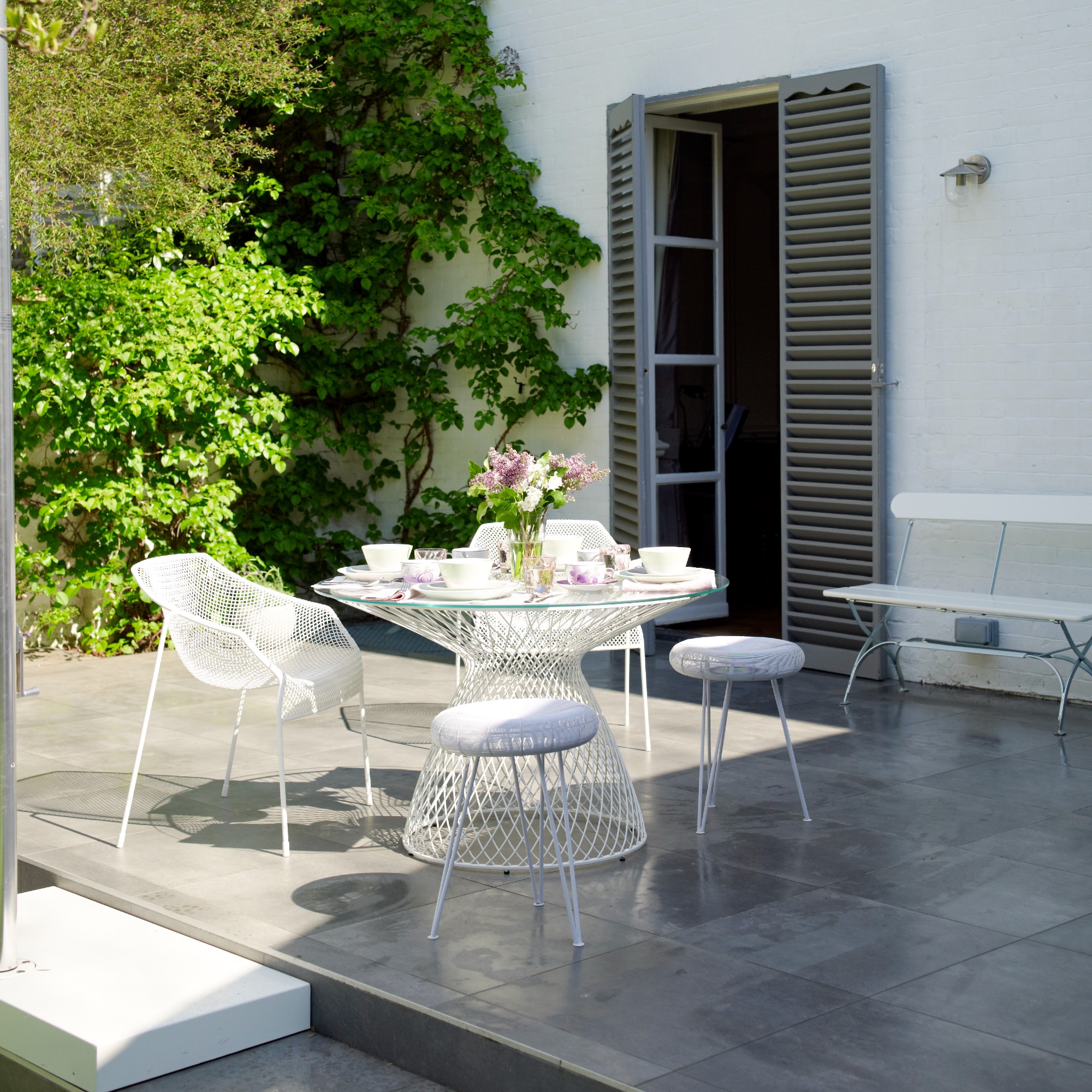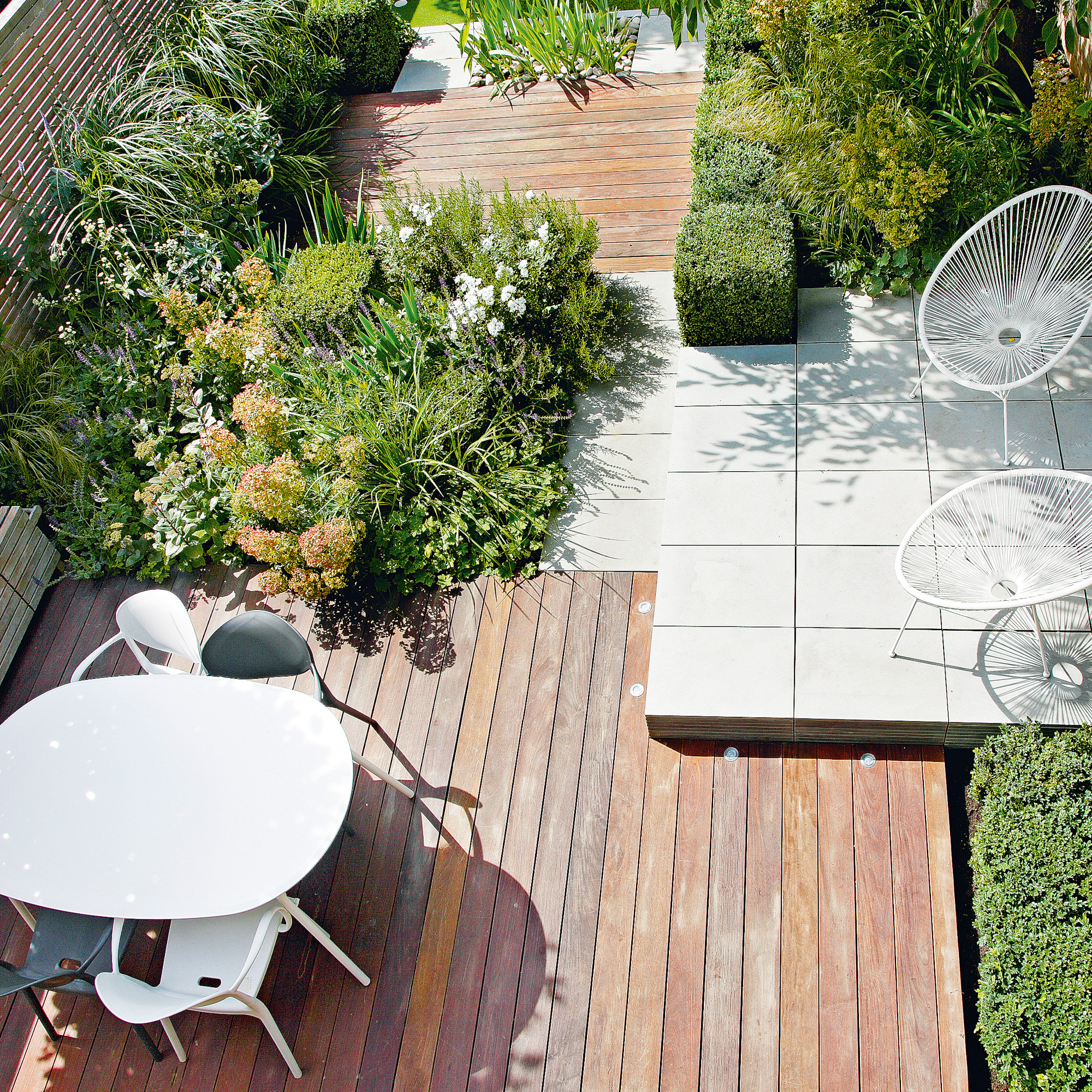How to clean plastic garden furniture - top tips to get rid of mould and remove staining
Does your plastic garden furniture need some TLC? We’ve got you covered


If you’re wondering how to clean plastic garden furniture, you’ve come to the right place. We’ve got a handy step-by-step guide that will leave your outdoor furniture set sparkling quicker than you can say ‘BBQ round ours!’
Yes, while most of us know that we should clean our garden furniture, it’s fair to say that this task can be pushed to the bottom of our to-do lists. And while we know that the best garden furniture needs TLC, it’s also easy to make garden furniture cleaning mistakes - and that can put a lot of pressure on the task.
This is largely because different garden furniture materials have different care requirements. For example, the way you clean wooden garden furniture is very different from how you clean rattan garden furniture or plastic garden furniture. That’s why we’ve covered the latter for you.

What you'll need
- Microfibre cloths: like these MTS Pack of 10 Microfibre Cleaning Cloths from Amazon.
- Garden hose: like this McGregor Reinforced Hose Set from Argos.
- Scrubbing brush: like this Antibacterial Scrubbing Brush from Dunelm.
- White vinegar: like this Miniml White Vinegar from Lakeland.
- Baking soda: like this Duzzit Amazing Baking Soda from Amazon.
- Bleach: like this Domestos White & Sparkle Thick Bleach from Amazon.
Step-by-step
1. Set up a designated cleaning station
Cleaning plastic garden furniture can be a messy job, which is why it’s always a good idea to set up a designated cleaning station before you get started. Not only that, but you may be using cleaning products that could damage or even kill the plants in your garden borders or ruin your lawn care efforts.
With this in mind, aim to clean your plastic garden furniture away from your grass or other plants and focus on cleaning near a drain, such as on your patio or driveway. If you want to ensure an extra level of protection, you could even lay down a plastic tarp.
2. Tackle the mould and mildew first

Unfortunately, plastic garden furniture can suffer from mould and mildew build-up. If left for too long, this can take over the plastic, and you may be unable to restore your furniture to its former glory.
So, you should always tackle mould and mildew as soon as you spot it, and always make sure you get rid of it before you carry on with the general cleaning of your plastic garden furniture. To do this, you’ll need to clean with vinegar, as it has both antifungal and antibacterial properties.
Sign up to our newsletter for style inspiration, real homes, project and garden advice and shopping know-how
Ryan Kaila, garden furniture expert from Kingfisher Direct, explains, ‘Vinegar is the ideal solution to use when cleaning as its acidic nature makes it perfect for breaking down tough stains. It is particularly effective on plastic furniture as plastic is resistant to vinegar and therefore won't cause any damage.’
Vinegar is still highly acidic, though, which is why you should always dilute your vinegar before cleaning your plastic garden furniture. Aim to fill a spray bottle with a 3:1 ratio of white vinegar and water and spray the mouldy areas liberally. Then, let it sit for at least half an hour - or one hour if you have the time.
By the end of the hour, the mould should have loosened, and you should be able to wipe it away with a damp cloth. However, if it's particularly stubborn, you may need to repeat the process.
3. Choose your cleaning agent

There are so many different products that you can use to clean plastic furniture. And while we’ll always shout loud and proud about natural cleaning products, we appreciate that you may need to make an exception for white plastic furniture.
After all, white plastic is notorious for staining, and it can be impossible to remove it naturally. Instead, you’ll need to half-dilute some bleach with water and scrub it onto the stains. Whatever you do, don’t do this on coloured plastic garden furniture, and always wear gloves when handling bleach.
If you don’t need to remove any stains, you can use a variety of natural products. These include a simple mixture of warm, soapy water (like you’re washing the dishes) or water mixed with baking soda.
Ryan Kaila says, ‘When it comes to cleaning outdoor furniture, I always recommend starting with warm water and all-purpose cleaner or dish soap. This is the most simple, cost-effective and gentle method of cleaning, so it's always best to try this method before using a harsher cleaner.’
However, the baking soda is particularly helpful if you have any lingering discolouration or dried-on debris that needs a tougher touch.
Whatever you choose, grab a scrubbing brush or clean microfibre cloth and use your cleaning agent to wipe down your plastic garden furniture. Make sure you get into all of the nooks and crannies.
4. Rinse and air-dry
When you’re confident that you’ve scrubbed every inch of your plastic garden furniture with your cleaning agent, Ryan says, ‘Rinse thoroughly with fresh water, and if there are remaining marks on the furniture, repeat the process.’ You should do this with a garden hose or a few buckets of clean water.
Don’t be tempted to use one of the best pressure washers for this task, though. Although you may assume that this handy garden appliance could help you out, plastic furniture is one of the many types of garden furniture you should never clean with a pressure washer.
So, rinse gently and then allow the plastic garden furniture to air-dry in a sunny area of your garden. If it’s a cloudy day, dry with a clean microfibre cloth or chamois cloth instead.

5. Clean your cushions and accessories
There’s no point cleaning your plastic garden furniture if you’re going to immediately cover them in dirty cushions or accessories. So, taking a moment to clean your outdoor furniture cushions is also a worthwhile task.
It may be that you need to get mould and mildew out of your outdoor cushions or it may be that they just need a spin in the washing machine. But whatever the case, always make sure that these cushions and accessories are fully clean and dry before putting them back on your plastic garden furniture.
6. Prevent future dirt build-up

Although cleaning plastic garden furniture isn’t rocket science, it still takes up a lot of your time and energy. So, you probably don’t want to do it again in a hurry.
Because of this, you need to do everything you can to prevent future dirt build-up. How you do this depends on your needs, as it may be that you simply need to give them a quick wipe down with a soapy cloth after every use, or you may have to move them away from trees (and the tree sap and bird droppings that go with them).
Everyone will benefit from using an outdoor furniture cover on their plastic garden furniture, though. This is echoed by Caron Grant, Brand Manager at Bridgman, who says, ‘Outdoor furniture covers are as essential as any piece of garden furniture or outdoor accessory.’
‘When you buy your outdoor furniture, you are investing in pieces that you and your loved ones will enjoy season after season - so it is absolutely essential to protect your investment. Covers will keep your favourite garden furniture looking pristine for years to come, making cleaning quicker and easier.’
If you really want to push the boat out, you could also consider sealing your plastic garden furniture with wax to prevent future dirt build-up. You can use any car wax for this.
FAQs
How to make plastic outdoor furniture look new?
Cleaning plastic garden furniture is the best way to make it look new, as dirt and grime can be very obvious on plastic - especially if you have white plastic garden furniture. You don’t have to give it a huge clean, either. Sometimes, just a once-over with soapy water is all it needs.
If you want to bring the shine back to your plastic garden furniture, you can also use WD-40 Multi-Use Product from Amazon to do that. Simply spray the lubricant over the plastic and rub it in with a cloth until it's all soaked in. You might want to give it some time to fully dry before you sit on it, though.
How do you remove algae from plastic furniture?
Algae aren’t as hard as mould or mildew to remove from plastic furniture, so all you should need is a bucket of warm, soapy water. You should then brush the soapy water all over the plastic furniture, paying close attention to the areas that are most affected.
If this doesn’t work as effectively as you’d like, you could also add some vinegar into the mix. This also has antibacterial and antifungal properties for a more hygienic clean.
Well, there you have it. That’s all you need to clean plastic furniture on your own.

Lauren Bradbury has been the Content Editor for the House Manual section since January 2025 but worked with the team as a freelancer for a year and a half before that. She graduated with a Bachelor’s degree in English and Creative Writing from the University of Chichester in 2016. Then, she dipped her toe into the world of content writing, primarily focusing on home content. After years of agency work, she decided to take the plunge and become a full-time freelancer for online publications, including Real Homes and Ideal Home, before taking on this permanent role. Now, she spends her days searching for the best decluttering and cleaning hacks and creating handy how-to guides for homeowners and renters alike, as well as testing vacuums as part of her role as the Ideal Home Certified Expert in Training on Vacuums, having spent over 110 hours testing different vacuum models to date!